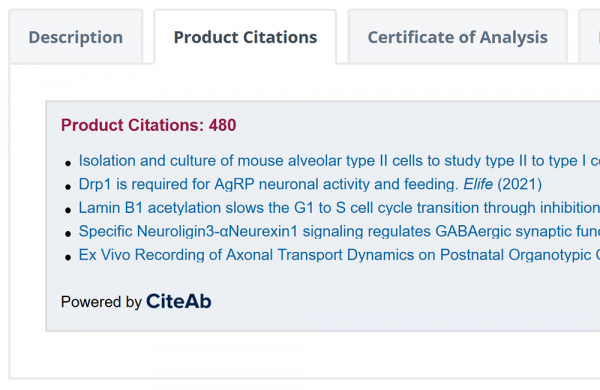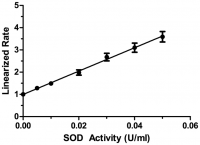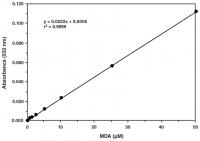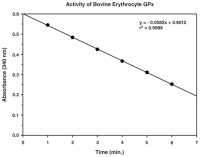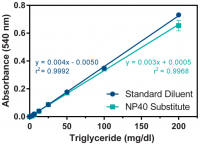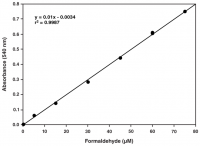One of the first questions we often ask ourselves when buying online is: Does the product have the desired quality? Or to put it more simply: Does the product do what it is supposed to? For this, we usually take a look at the reviews of the respective product. But in science, writing reviews is not necessarily the standard. For researchers, it is much more meaningful and also more helpful, if a product has already been used in a scientific work, which has also been published.
Through our partnership with CiteAb, we are able to provide our customers with product references for antibodies, proteins, biochemicals and assays from all our manufacturers. The "Product Citations" tab on each product detail page lists publications, in which the respective reagents were used. Clicking on the "View All Citations" button will take you to the corresponding product page at CiteAb, where you will find the individual publications. But that's not all: CiteAb offers detailed data on the various laboratory products that help scientists in their research. For example, you can see statistics on how often an antibody was used in Western blot or immunofluorescence and which dilutions were used (Fig. 1). In this way, we provide real examples from research of how our products are used and provide valuable information for planning your experiments.

Figure 1: Excerpt of product data for the anti-phospho-RPA32 (Ser4/Ser8) antibody at CiteAb. The original page can be found here.
In our May 2021 blog article, we featured the 10 most cited products from our portfolio of more than 700,000 products. The large number of peer-reviewed publications shows that our products help to obtain new scientific knowledge and drive research in a wide range of fields. After more than a year, we decided to republish this article. What has changed? Are there any new products in the top 10, is there perhaps even a new frontrunner? And what's behind the products? In this blog article, you will get answers to all these questions.
These products await you:
Click on the respective product name to go directly to the corresponding section.
| Product | Product Type | Supplier | Citations (29.11.2022) |
| Anti-Red Fluorescent Protein (RFP) | Antibody | Rockland Immunochemicals | 937 |
| Superoxide Dismutase Assay Kit | Assay Kit | Cayman Chemical | 411 |
| Anti-phospho-RPA32 (Ser4/Ser8) | Antibody | Bethyl Laboratories | 325 |
| Anti-Green Fluorescent Protein (GFP) | Antibody | Rockland Immunochemicals | 320 |
| Rapamycin | Biochemical | LC Laboratories | 273 |
| TBARS Assay Kit | Assay Kit | Cayman Chemical | 256 |
| Glutathione Peroxidase Assay Kit | Assay Kit | Cayman Chemical | 249 |
| Triglyceride Colorimetric Assay Kit | Assay Kit | Cayman Chemical | 243 |
| Anti-NLRP3/NALP3, clone Cryo-2 | Antibody | AdipoGen Life Sciences | 239 |
| Catalase Assay Kit | Assay Kit | Cayman Chemical | 237 |
Anti-Red Fluorescent Protein (RFP)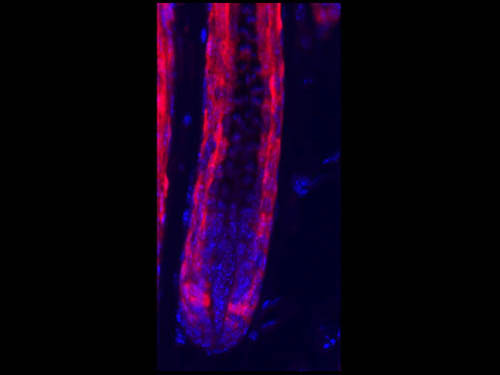
Still in first place in our top 10 is the anti-RFP antibody from Rockland Immunochemicals. Since May 2021, the number of peer-reviewed publications using this antibody has almost doubled! No wonder, as one of the most widely used biomarkers, the red-fluorescent protein is used to visualize cellular processes, localize proteins, and monitor expression of transgenic constructs. Excitation with blue light allows detection of bright red fluorescence. Rockland's anti-RFP antibody can be used in a variety of applications to detect or purify various RFP fusion proteins. Methods include immunofluorescence, immunohistochemistry, immunoprecipitation, ELISA, flow cytometry and Western blotting.
Superoxide Dismutase Assay Kit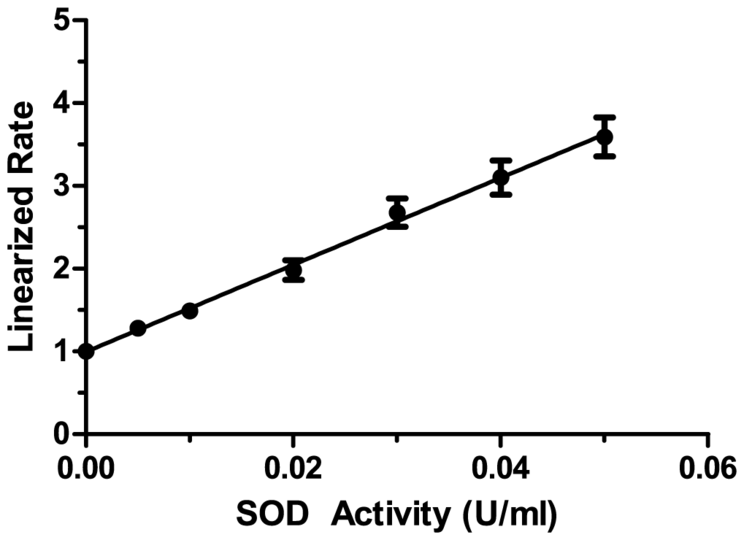
The second place in our list is a "newcomer": the Superoxide Dismutase Assay Kit from Cayman Chemical. Superoxides are formed as by-products of various metabolic processes in the cell cycle and belong to the reactive oxygen species (ROS), which lead to oxidative stress. Oxidative stress can damage cells, resulting in cell death under certain conditions.
Enzymes such as superoxide dismutase (SOD) are able to convert superoxide anions into hydrogen peroxide. The hydrogen peroxide is then converted to oxygen and water by so-called catalases. Therefore, superoxide dismutases have an important function in protecting the cell from oxidative stress. Research results show that mutations within the enzyme can lead to diseases such as ALS, Alzheimer's and Parkinson's [1].
Anti-phospho-RPA32 (Ser4/Ser8)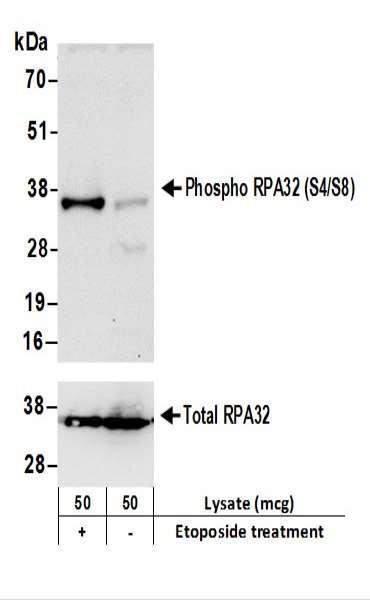
Moving down one place is this anti-phospho-RPA32 antibody from Bethyl Laboratories (FORTIS Life Sciences). It specifically binds to the 32 kDa subunit of replication protein A (RPA) when it is phosphorylated at serine 4 or serine 8. RPA is the major single-stranded DNA (ssDNA)-binding protein in eukaryotic cells and plays a critical role in replication (as the name implies), recombination, and DNA repair mechanisms [2, 3]. In replication, RPA is of particular importance: It prevents ssDNA from rewinding onto itself or forming secondary structures. In addition, RPA protects ssDNA from degradation by so-called endonucleases [3]. Thanks to these stabilizing and protective functions, RPA enables replication by DNA polymerases.
Phosphorylation of RPA is a response to DNA damage and results in a conformational change of RPA, preventing the protein from binding to ssDNA [4, 5]. RPA phosphorylation is important for DNA damage recovery and replication stress [6]. For this reason, the anti-phospho-RPA32 antibody is an excellent marker for studying cell stress during the replication process. Applications, in which this antibody can be used, include Western blot, immunoprecipitation, immunohistochemistry, and immunofluorescence.
Anti-Green Fluorescent Protein (GFP)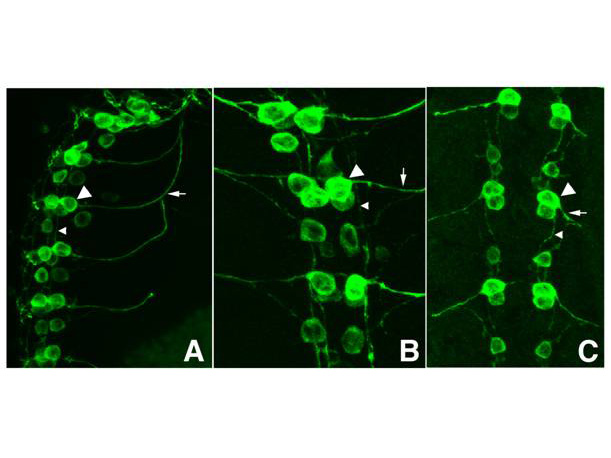
Even better known than RFP is the green fluorescent protein (GFP), which is also used as a biomarker. Osamu Shimomura, Martin Chalfie and Roger Tsien were even awarded the Nobel Prize in Chemistry in 2008 for the "discovery and further development of green fluorescent protein" [7]. GFP is used to visualize cellular processes, localize proteins, and monitor the expression of transgenic constructs. When excited with UV or blue light, a bright green fluorescence can be detected. This anti-GFP antibody, which is also produced by Rockland Immunochemicals, has moved up from #6 to #4 on our list. It can be used in a variety of applications to detect or purify various GFP fusion proteins. Methods include immunofluorescence, immunohistochemistry, immunoprecipitation, Western blot, and ELISA.
Rapamycin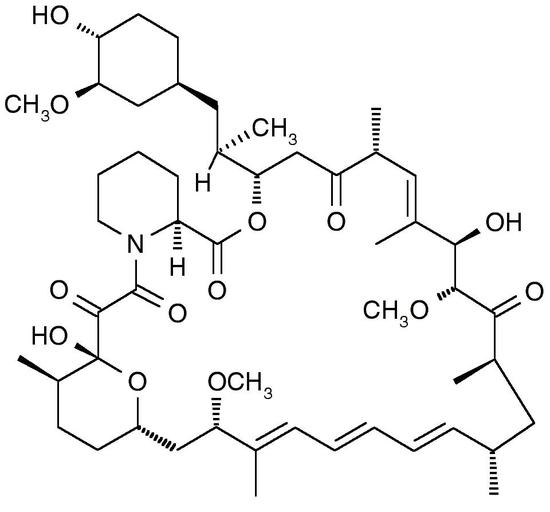
The product "Rapamycin" from LC Laboratories has jumped up a few places (from 9 to 5). Rapamycin is a biomolecule with a macrolide structure that has multiple biological properties. A key mechanism of action of rapamycin is inhibition of the protein kinase mTOR (mammalian target of rapamycin). This kinase activates specific signaling pathways such that the transition from G1 to S phase and thus mitosis are initiated [8]. For inhibition, rapamycin first forms a complex with the cytosolic protein FKBP12, whereupon interaction with mTOR occurs. To inhibit mTOR, rapamycin is often used as an additive in cell cultures.
Due to its properties, rapamycin (or rapamycin-analogous substances, so-called rapalogs) is also used for chemical-induced dimerization (CID). Schematically, this dimerization consists of three components, the binding macromolecules and a dimerization inducer, which in this case is rapamycin. This process can be used, for example, to initiate protein-protein interactions that can lead to changes in signal transduction within a cell [9]. In addition, multiple subunits of a protein can be brought together by a CID, thereby activating the protein [10]. This is used, for example, in malaria research to join two subunits of the enzyme Cre recombinase. The active enzyme can then permanently remove a previously labeled target gene from the genome. In this way, it is investigated whether the target gene is essential for the malaria parasite [11].
TBARS Assay Kit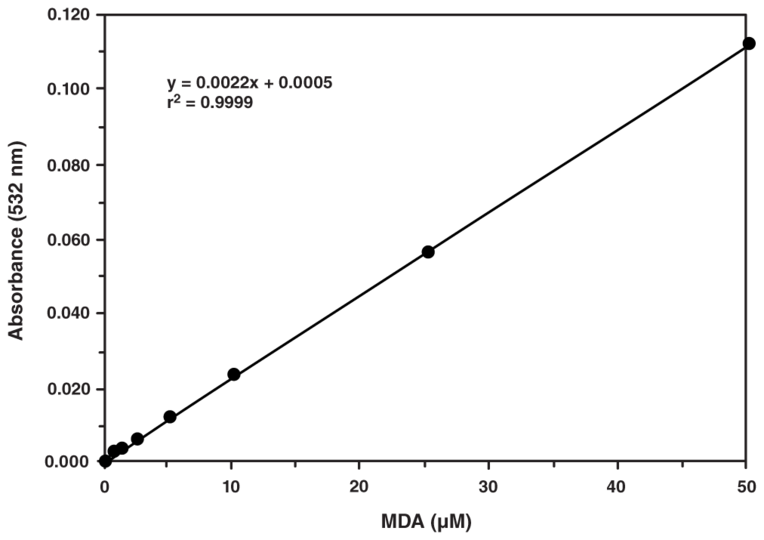
Cayman Chemical's TBARS assay kit is new to the top 10 and is one of the most commonly used methods for the determination of lipid peroxidation. Thus, this kit is used similarly to three other kits in our ranking for the study of oxidative stress.
The decomposition of unstable peroxides from polyunsaturated fatty acids (PUFAs) produces so-called malondialdehyde [12]. The reaction of malonadialdehyde with thiobarbituric acid results in a colour change. The resulting TBARS (thiobarbituric acid reactive substances) can then be quantified colorimetrically at 532-535 nm [12]. Measurement of these TBARS is a well-established method for screening and monitoring lipid peroxidation.
In the past, various modifications have allowed the method to be used for analysis of human and animal tissue samples, as well as with liquids, drugs, and foods. The Cayman TBARS assay kit provides a stable, reproducible method for the determination of lipid peroxidation in plasma, serum, urine, tissue homogenates and cell lysates.
Glutathione Peroxidase Assay Kit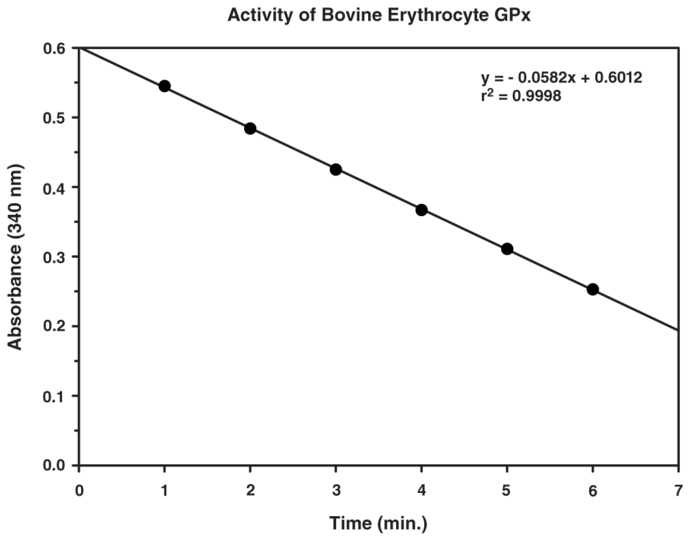
Another "newcomer" and also an indicator of the increased relevance of the topic of "oxidative stress" is the glutathione peroxidase assay kit from Cayman Chemical. Glutathione peroxidases have the same purpose as the aforementioned superoxide dismutases: protection against reactive oxygen species and oxidative stress [13]. Glutathione peroxidases are a group of enzymes that reduce hydrogen peroxide to water. Different isoforms of glutathione peroxidases can be found in cells, which are distinguished according to their cellular localization and substrate specificity [13].
With the help of this kit, it is possible to indirectly measure the enzyme activity of glutathione peroxidase. Oxidized glutathione is returned to its reduced state by a coupled reaction with glutathione reductase and NADPH. The associated oxidation of NADPH to NADP+ is accompanied by a decrease in absorbance at 340 nm, which is directly proportional to the enzyme activity in the sample. The kit can be used to determine glutathione peroxidase activity in plasma, erythrocyte and cell lysates, and tissue homogenates.
Triglyceride Colorimetric Assay Kit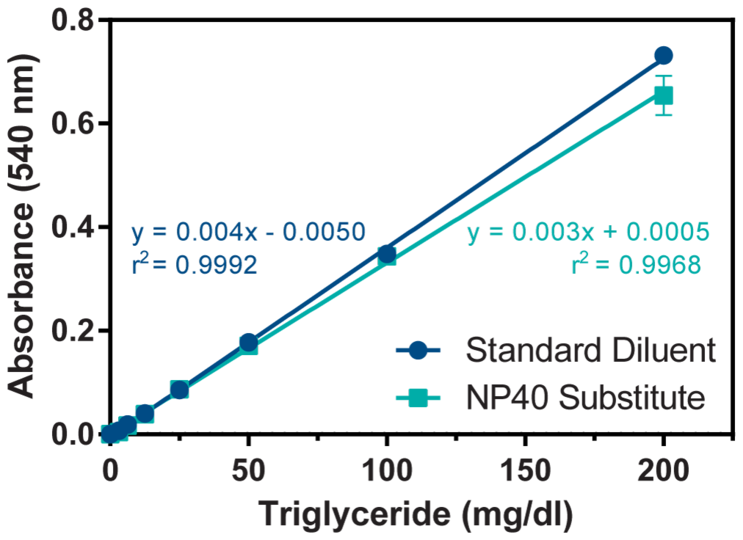
Triglycerides are among the dietary fats that enter the body through food intake and play an important role as energy suppliers. In the liver, the body can also synthesize triglycerides itself. As the name suggests, they consist of a glycerol molecule bound to three fatty acids. During enzymatic degradation by so-called lipases, triglycerides are split back into glycerol and fatty acids [14].
With the help of the colorimetric triglyceride assay kit from Cayman Chemical – also new to our list – it is possible to determine the triglyceride level in plasma, serum, cell lysates and in homogenized tissue samples. For this purpose, triglycerides are hydrolyzed with lipases to yield glycerol and free fatty acids. The concentration of the released glycerol is then determined colorimetrically at 540 nm via a coupled enzymatic reaction. The determined concentrations can be helpful in the diagnosis of metabolic diseases such as hyperlipoprotein anemia.
Anti-NLRP3/NALP3, clone Cryo-2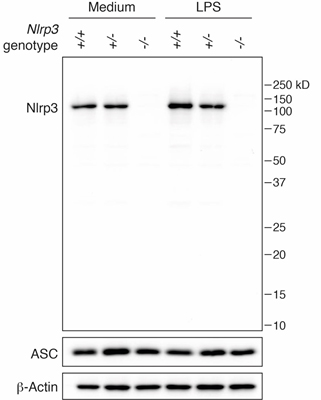
NLRP3 (Nucleotide-binding Domain, Leucine-Rich Repeat Family, Pyrin Domain-containing 3) is a cytoplasmic protein that plays an important role in the innate immune system as a so-called pattern recognition receptor (PRR). Such PRRs are often localized at the cell surface and recognize pathogens, for example viruses or bacteria, by their pathogen-associated molecular patterns (PAMPs) [15-17].
PAMPs are conserved recognition features that are typical for the respective pathogen and are essential for survival, such as a specific surface protein. Due to its important function, such a protein cannot be modified. Recognition of these pathogen-specific patterns by PRRs initiates an immune response that should lead to the destruction of the pathogenic organism [17]. Another feature of PRRs is the recognition of so-called DAMPs (damage-associated molecular patterns). These are intracellular molecules that are released as a result of cell damage (e.g. apoptosis). Binding to PRRs triggers inflammatory responses [18,19].
Also new in our top 10 is the anti-NLRP3 monoclonal antibody from AdipoGen Life Sciences, which recognizes the protein from mice and humans and has applications in immunohistochemistry, (chromatin) immunoprecipitation, Western blot, and immunocytochemistry.
Catalase Assay Kit
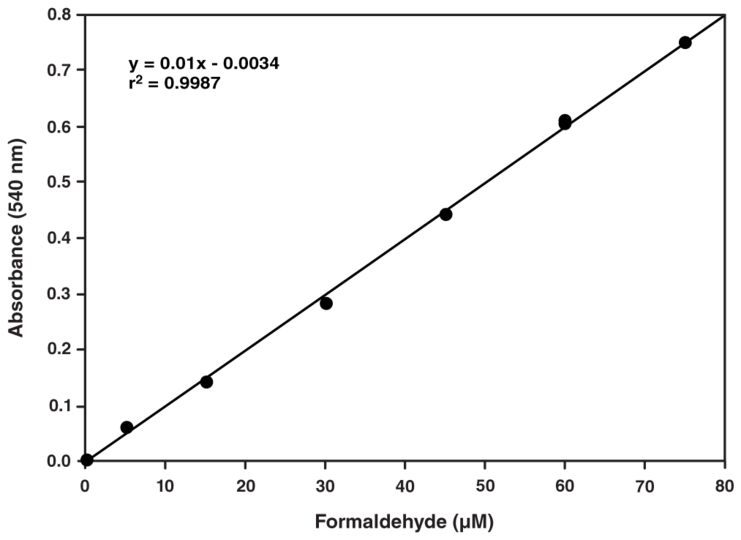
The 10th place in our ranking is also occupied by a newcomer. The enzyme catalase is found in the peroxisomes of all tissues, especially in the liver [20]. It is a regulator in H2O2 metabolism. At low concentrations, H2O2 serves as an important modulator during physiological processes such as signal transduction, cell proliferation, and apoptosis. In contrast, at high concentrations, H2O2 can lead to oxidative stress and is thus toxic to the cell [21, 22].
To reduce oxidative stress, catalase cleaves hydrogen peroxide into water and oxygen so that it is no longer harmful to cells [23]. By using the Cayman Chemical catalase assay kit, it is possible to determine the enzyme activity of catalase in plasma, serum, erythrocyte and cell lysates, and tissue homogenates. The principle behind the determination is based on the reaction of catalase with methanol in the presence of hydrogen peroxide. The product of the reaction is formaldehyde, which is measured spectrophotometrically using Purpald as the chromogen. The Purpald forms a heterocyclic compound with aldehydes, which changes colour from colourless to violet by oxidation.
Summary
"You have the vision, we have the substance" - for more than 50 years, we at Biomol have been working according to this principle. In doing so, our primary goal is to provide science with high-quality laboratory reagents and thus contribute to research in a wide range of scientific disciplines. The large number of product citations shows that our products enable research and bring new findings to light every day.
Interestingly, five out of ten products in our updated ranking are assay kits - there was no product from this category in last year's ranking. This shows that researchers are focusing more on holistic product solutions for their questions. In total, there are six products in this Top 10 list that were not yet listed in the original article. Of these, five products are related to the topic of "Oxidative Stress" or the associated topic of "Cell Death". This comparison makes it clear that scientific interests are changing and that certain topics have recently become more important. We are curious to see what the next Top 10 will look like!
Sources
[1] Fukai T, Folz RJ, Landmesser U, Harrison DG. Extracellular superoxide dismutase and cardiovascular disease. Cardiovasc Res. 2002 Aug 1;55(2):239-49. doi: 10.1016/s0008-6363(02)00328-0
[2] Wold MS (1997). "Replication protein A: a heterotrimeric, single-stranded DNA-binding protein required for eukaryotic DNA metabolism". Annual Review of Biochemistry. 66 (1): 61–92. doi:10.1146/annurev.biochem.66.1.61
[3] Chen R, Wold MS (December 2014). "Replication protein A: single-stranded DNA's first responder: dynamic DNA-interactions allow replication protein A to direct single-strand DNA intermediates into different pathways for synthesis or repair". BioEssays. 36 (12): 1156–1161. doi:10.1002/bies.201400107
[4] Shao R.-G., Cao C.X., Zhang H., Kohn K.W., Wold M.S., Pommier Y. Replication-mediated DNA damage by camptothecin induces phosphorylation of RPA by DNA-dependent protein kinase and dissociates RPA:DNA-PK complexes. EMBO J.1999; 18:1397–1406.
[5] Binz S.K., Lao Y., Lowry D.F., Wold M.S. The phosphorylation domain of the 32-kDa subunit of replication protein A (RPA) modulates RPA–DNA interactions. Evidence for an intersubunit interaction. J. Biol. Chem.2003; 278:35584–35591.
[6] Olson E, Nievera CJ, Klimovich V, Fanning E, et al. RPA2 is a direct downstream target for ATR to regulate the S-phase checkpoint. J Biol Chem. 2006; 281:39517–33.
[7] https://www.spektrum.de/news/ein-hurra-der-bunten-allzweck-dose/969845
[8] https://www.medicoconsult.de/rapamycin/, 12.11.2022
[9] Clackson T. Dissecting the Functions of Proteins and Pathways using Chemically Induced Dimerization. 2006. Chem Biol Drug Des 206; 67:440-442. Doi: 10.1111/j.1747-0285.2006.00403.x
[10] https://onlinelibrary.wiley.com/doi/full/10.1002/nadc.20164047294, 12.11.2022
[11] Birnbaum J, Flemming S, Reichard N, Soares AB, Mesen-Ramirez P, Jonscher E, et al. A genetic system to study Plasmodium falciparum protein function. Nat Methods. 2017;14(4):450–6. 10.1038/nmeth.4223
[12] Dasgupta A., Klein K., Chapter 2 - Methods for Measuring Oxidative Stress in the Laboratory, Editor(s): Amitava Dasgupta, Kimberly Klein, Antioxidants in Food, Vitamins and Supplements, Elsevier, 2014, Pages 19-40, ISBN 9780124058729 https://doi.org/10.1016/B978-0-12-405872-9.00002-1.
[13] https://ipgd-labore.de/institut-leistungsspektrum/analysen-a-z/g120/glutathionperoxidase-1/glutathionperoxidase-1.html, 07.11.2022
[14] https://www.netdoktor.de/laborwerte/triglyceride/, 7.11.2022
[15] https://flexikon.doccheck.com/de/NLRP3#:~:text=NLRP3%20ist%20ein%20zytoplasmatisches%20Protein,und%20Teil%20des%20Inflammasoms%20ist, 04.11.2022
[16] https://flexikon.doccheck.com/de/Pattern-Recognition-Rezeptor, 04.11.2022
[17] https://flexikon.doccheck.com/de/PAMP, 04.11.2022
[18] https://flexikon.doccheck.com/de/DAMP, 04.11.2022
[19] Martinon F (Mar 2008). "Detection of immune danger signals by NALP3". review. Journal of Leukocyte Biology. 83 (3): 507–11. doi:10.1189/jlb.0607362. PMID 17982111.
[20] https://flexikon.doccheck.com/de/Katalase, 14.11.2022
[21] Góth, L., Rass, P. & Páy, A. Catalase enzyme mutations and their association with diseases. CNS Drugs 8, 141–149 (2004). https://doi.org/10.1007/BF03260057
[22] https://www.chemie.de/lexikon/Katalase.html, 14.11.2022
[23] https://www.transgen.de/datenbank/enzyme/2006.katalase.html, 14.11.2022

